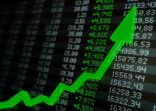The plethora of 2015 fund house forecasts have nearly all emphasised the attraction of US equities in 2015. But comparatively little mention has been made of the potential for the best performing sector in 2014: India equities.
An investor who put capital into India-focused equity funds at the beginning of 2014 would have had the best chance of outperforming all other sectors that are offered by products for sale in Hong Kong or Singapore, according to FE Analytics data.
In fact, the JPMorgan India Smaller Companies Fund was the best performing fund across all equity funds available in Hong Kong and Singapore in 2014, (to December 18), providing an 84% return.
The India sector story was true among funds for sale in Singapore as well. Indonesia was second, even though high valuations gave many investors pause.
India equities in 2015?
India is BlackRock’s favourite market in the new year due to the reform initiatives of the new government, which the fund house believes can lead to growth acceleration.
“Positive change is coming through from the new government and it is infectious,” said Andrew Swan, head of Asian equities. “It is very visible and we expect that process to continue and that will support equities.
“We are seeing micro reforms in terms of approval process and deadlines within the government, which is the first wave of reform. The next big macro reforms would be the GST [goods and sales tax] next year. If introduced, that would add around 2% to the growth alone, which is quite significant, when the growth is around 5%.”
Other fund houses were wary of the India rally and did not expect a repeat performance in 2015.
“We would be surprised if most of the ASEAN markets and India continued their 2014 rallies. Having outperformed, they could easily ‘rest’ at least for the first half of 2015,” wrote Robert Rountree, global strategist at Eastspring Investments, in the firm’s global outlook report.
“We doubt that their individual stories are over, but sufficiently high valuations could generate investor fatigue. While Indonesia and India are both valued around their ten-year averages, investors are looking past 2014’s election promises and focusing on what messrs. Jokowi and Modi deliver.
“Lingering currency fears could engender added caution, at least until the current account deficits shrink further. All in all, it is easy to make the case that investors will (initially, at least) focus on the lower hanging fruit identifiable elsewhere.”
The sectors at the bottom
The worst performing sector in 2014 across funds for sale in Hong Kong and Singapore was Emerging Europe equities. This was undoubtedly driven by Russia exposure. Russia’s involvement in the Ukraine conflict was a major factor in underperformance. The severe dip in December is from the plunge in oil prices and steep fall in the value of the rouble.
Emerging Europe equities in 2015?
Russia impacts emerging European equities, but most fund houses have refrained from making a call on emerging Europe equities until the Russian currency chaos subsides and the damage to the country’s economy becomes more clear.
Currently, doom scenarios for Russia are being put forward. However, investor negativity could turn out to be overreaction, which would signal a buying opportunity in some sectors.
Emerging Europe is also impacted by European countries. In 2015, fund houses have provided a spectrum of views for European performance.
In BMO’s global outlook, the firm has summarised 2015 with the theme, the “West Rides Again”.
However, the West in this view is the US, UK and Canada, with expectations for Europe “to generate at least a modicum of growth and not backslide into recession”.
Schroders has a neutral rating on European equities, mentioning Germany’s sputtering growth engine and the knock-on effects that has on fellow European trading partners.
However, the fund house likes the banking sector, which fared well during the ECB asset quality review. The firm believes bank lending will accelerate as growth slowly picks up in 2015.
Franklin Templeton, in its 2015 outlook, was more optimistic. Peter Langerman, president and CEO of Franklin Mutual Series, said his group is not overly concerned about economic recession and deflation in Europe.
“Instead, they trust that a combination of a declining euro, historically low interest rates, and the prospect of further action by the European Central Bank will eventually lead the region out of its current economic profile.”
That view is aligns with the outlook of Citibank, which is slightly overweight European equities.
European valuations look better than those in the US and a lot of companies have earnings streams outside of Europe, said Roger Bacon, head of Citibank’s managed investments in Asia.
The bias is toward small and mid caps, which was one of the worst performing sectors this year.
“Banks were forced to restructure their balance sheets, crimping lending to small and medium-size businesses,” Bacon explained. “That will now start to open a little more.”
The bank is watching for signs of deflation, which could cause it to review Europe exposure. However, the region is “not quite the basket case that some people think”, he added.

















